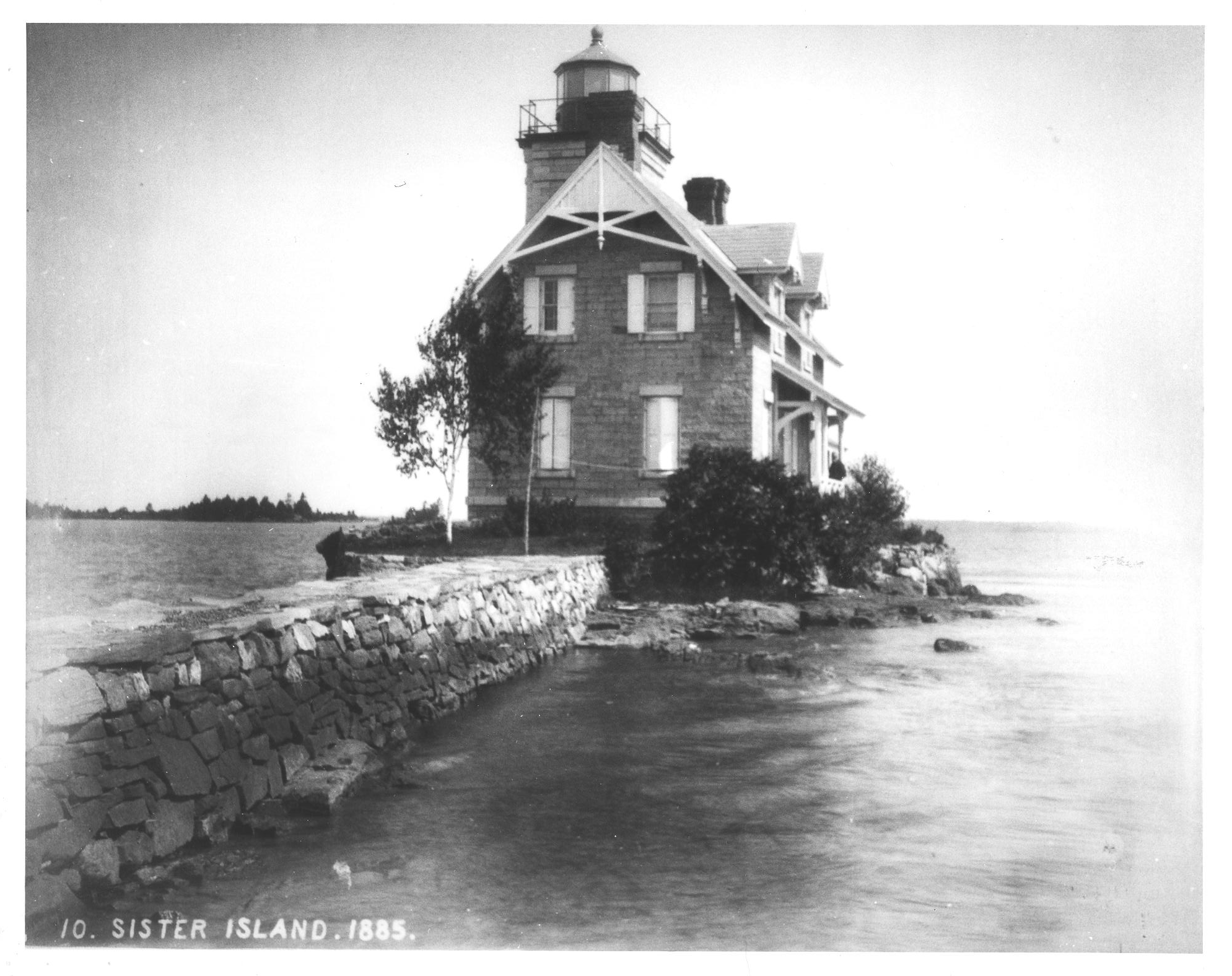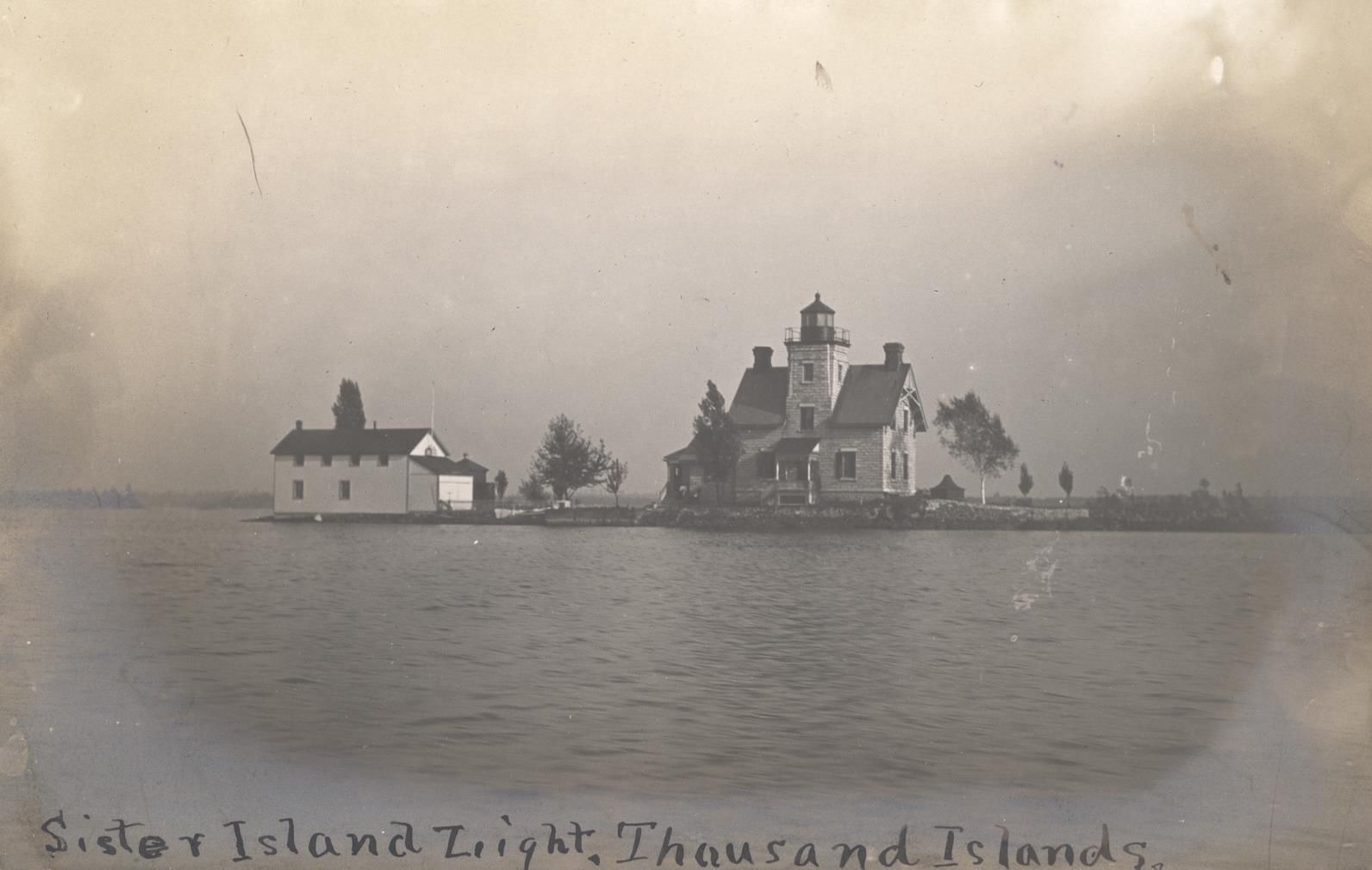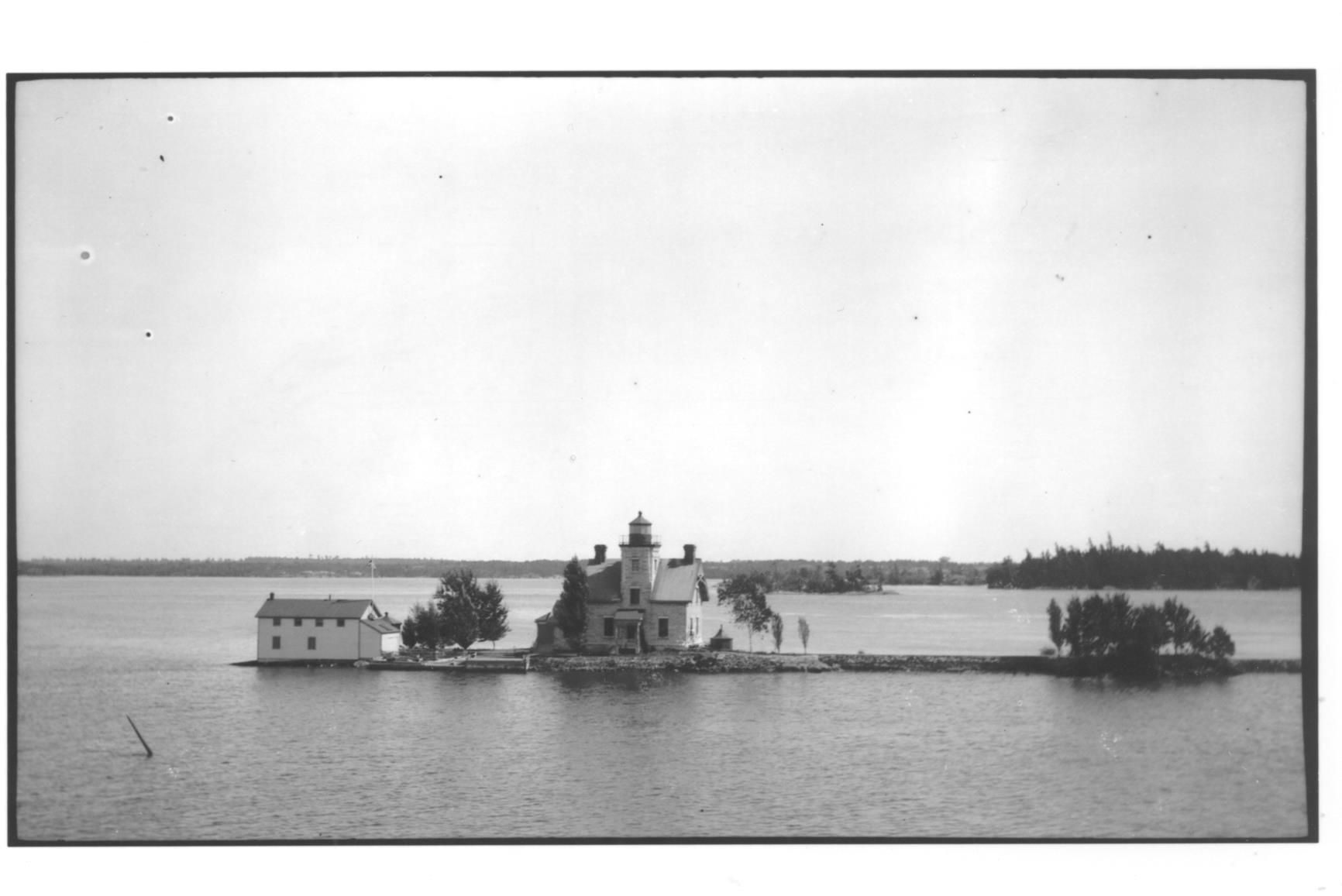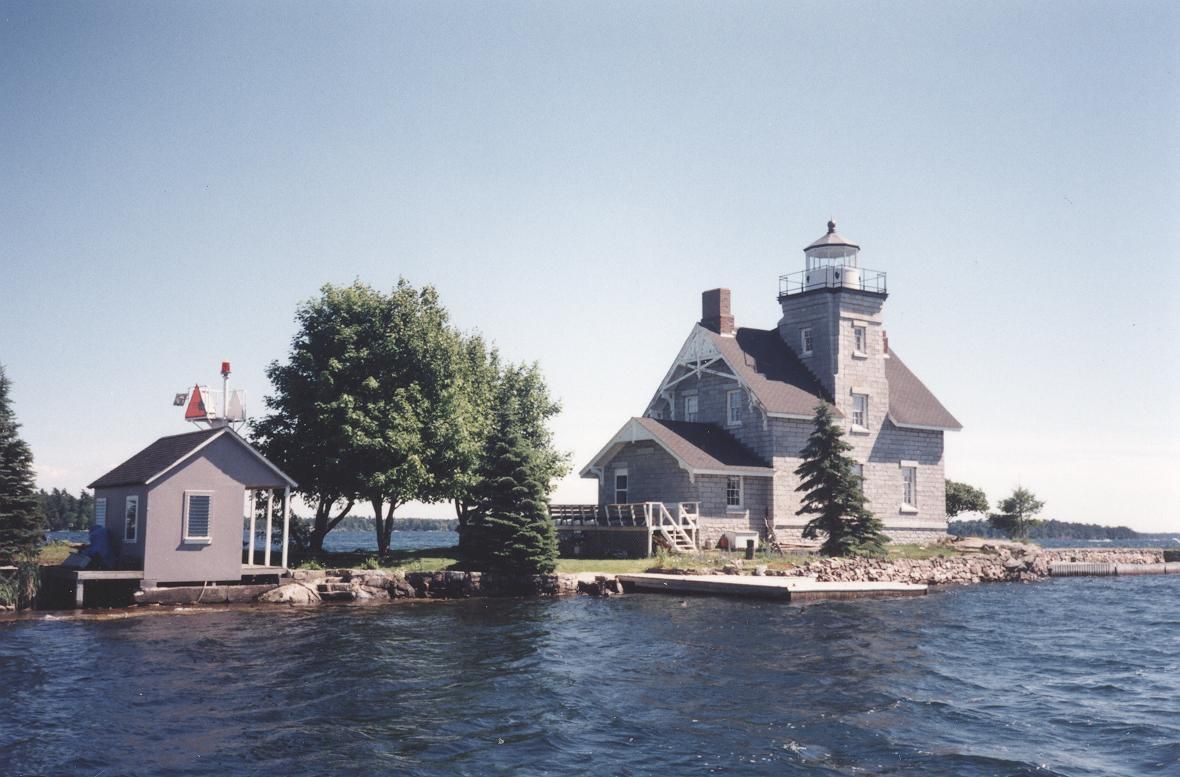Sister Island Lighthouse sits on a shoal of rock that presented itself as a string of three small islands, located about 6½ miles northeast of Alexandria Bay, New York, and maybe 1200 feet south of (Canadian) Grenadier Island. Variations on the name include Sisters Island, and sometimes the Three Sisters Islands. Constructed in 1870, and lighted on September 15th of that year, the lighthouse is just south of the international border, along the shipping channel of the St. Lawrence Seaway.

This 1870 sketch of “The Three Sisters” shows the lighthouse in its earliest days, with three individual islands connected by bridging walkways, which were described by the Lighthouse Board as “rough causeways of piles and boards on trestles.” In 1875 the walkways connecting the three islands were built up and reinforced, and a photograph from 1885 shows the substantial dry-stone causeways that resulted. The photograph also shows the distinct stick-style architectural details on the end of the building’s roof peak, details which were also present at Crossover Island and Sunken Rock lights.

The Lighthouse Board selected the lighthouse location to mark a treacherous spot in the channel that passed on the Canadian side of the island, but shortly after it was commissioned, the shipping channel was relocated to the American side of the channel. That meant that a new shipping channel had to be blasted out of the rocky river bed.
Like the lighthouse at Ogdensburg Harbor, the light tower and the attached keeper’s house at Sister Island is a solid structure built of limestone. The foundation is limestone block built onto the rock reef it marks, and the structure is built from dressed limestone. The Lighthouse Board initially proposed that the Sister Island lighthouse be built of brick, but due to specifics of the site and costs, limestone was chosen instead. This was acquired from quarries in Kingston, as was the limestone for Ogdensburg Harbor Light, which was lighted the following year. The resultant structure had a tower of 60 feet in height, and a fixed white light with a focal plane 47 feet above the water.

The Lightkeepers
As was common at many lighthouses, on both sides of the River, the job of lightkeeper often remained within a family for many years. Though the record in the Thousand Islands belongs to the Gillespie family on Wolfe Island (between father Robert and son William, the Gillespies kept the lighthouse for 77 years), the Dodge family at Sister Island served for over half a century. A Civil War veteran, William Dodge was appointed in 1870 as the first lightkeeper. It is likely William Dodge standing on the porch in the 1885 National Archives photograph. His son, also William Dodge, replaced him in 1893 and served until 1921.
In June 1894 the Canadian passenger steamer Ocean collided with the American barge Kent. Awakened by the sound of the impact, Keeper Dodge was involved in the rescue of those aboard. Both vessels sank, and two of the Ocean’s deckhands drowned.
Ralph Scobie’s appointment in May of 1921 ended the Dodge period on Sister Island. Scobie (previously keeper of the Ashtabula Lighthouse on Lake Erie) stayed as keeper until 1929, when he was transferred to Fair Haven Light near Rochester. That year Horace Walts was appointed as the last keeper, but only until the lighthouse was automated that same year. Horace Walts was already an active lightkeeper in the Thousand Islands. He was appointed at Sunken Rock Lighthouse (near Alexandria Bay) in 1912, where he remained until that lighthouse was also automated in 1929. Mr. Walts was well known in the lightkeeping service. He had won the Lighthouse Commissioners “Efficiency Star” for a record nine consecutive years, eventually being awarded a permanent gold star. The lightkeepers were replaced by a flashing white (acetylene) light. In 1932, it was changed to a red flashing light.
When the St. Lawrence Seaway opened in 1959, the lighthouse was replaced as an aid to navigation by a buoy, and discontinued. The 1959 List of Lights for the Great Lakes describes Sister Island thus: Light 178, Flashing Red - and now only 28 feet above the water - being located on the northeast end of Sister Island, about 175 feet outside of the channel limit, and with a “white triangular daymark, with red border, white pile.” Rented out since its discontinuation as a light, the old stone lighthouse was declared surplus in 1966, and was then sold into private ownership the following year.

Unlike many of the Thousand Islands lighthouses, Sister Island has changed little over its history. The filled and reinforced walkways were an early change, and other changes included a platform and steps to the dwelling (1880), a well (1884), interior alterations (1887), rebuilding the wharf and boathouse (1896), further enlargement of the boathouse (1899) , and the erection of an iron oil house (1902), but most of the expenses incurred were for minor maintenance issues. The view of the lighthouse has changed remarkably little over its 149 years, although there have undoubtedly been interior alterations in the past fifty years, to adapt the structure for its current use as a private home.

By Mary Alice Snetsinger
More about Mary Alice Snetsinger, ecoserv@kos.net
Mary Alice Snetsinger grew up in the United States and Canada, and worked for four years at Thousand Islands National Park. She became interested in the 19th century lighthouses of the Thousand Islands in 1997 and has been researching them ever since. Mary Alice provided TI Life with articles about Wolfe Island’s Lighthouses, Fiddler's Elbow, Lindoe Island Light, the Ogdensburg Harbor Light and Cape Vincent Harbor Lighthouses; click here to see them all.
Posted in: Volume 14, Issue 2, February 2019, History
Please click here if you are unable to post your comment.
